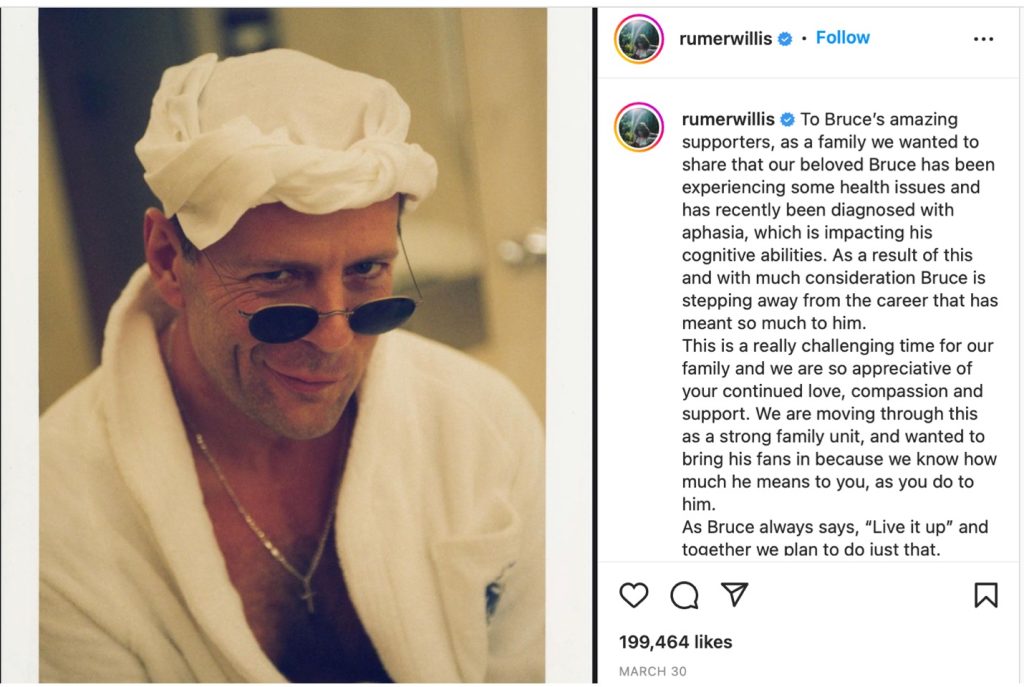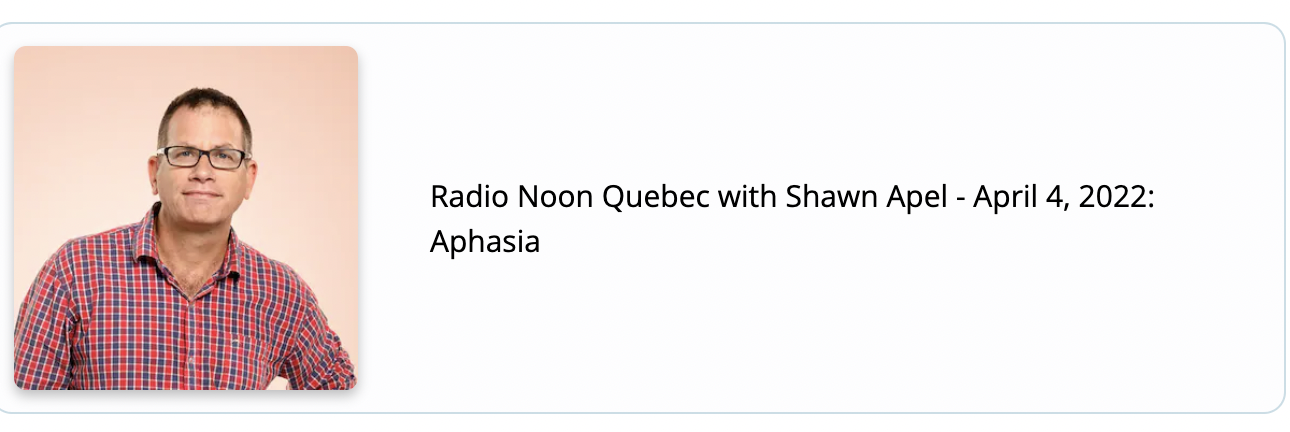 Long before Bruce Willis’ family announced his aphasia diagnosis to the world, I witnessed the effects of it firsthand through someone in my extended family.
Long before Bruce Willis’ family announced his aphasia diagnosis to the world, I witnessed the effects of it firsthand through someone in my extended family.
Aphasia is characterized by difficulty communicating verbally and in writing, and the most common cause of aphasia is brain damage following a stroke. The 100,000 plus Canadians who live with aphasia may maintain their ability to comprehend information, but find it challenging to express themselves. I should mention that this isn’t always the case depending on the cause and severity of the brain damage.
Lori Buchanan is a psychology professor at the University of Windsor who specializes in psycholinguistics and serves as Director of Aphasia Friendly Canada. The group offers Canadian businesses the training and resource development support they need to become “aphasia friendly.”
In a CBC article about aphasia, Dr. Buchanan describes living with the condition as follows: “It’s arguably the most devastating of any kind of injury that people can sustain. If you ask people ‘how would you feel if you were paralyzed in an accident?’ people always say that would be the worst thing ever … but if you ask people who have been paralyzed in an accident, they tend to be as happy as the average person. People with aphasia are not happy. It’s really isolating.”
June is Aphasia Awareness month, an ideal time to explore progress in regenerative medicine research as treatments or cures. (By the way, there is a fundraising walk/run on Sunday, July 24, and donations are very welcome.) In Canada, the Stem Cell Network and Medicine by Design are significant funders of regenerative medicine and cell therapy research, and some of those funds go towards stroke research. On the flip side we have the Heart and Stroke Foundation and Brain Canada who fund stroke research, some of it in the area of regenerative medicine or cell therapy.
The Stem Cell Network recently announced $19.5 million to support 32 projects and clinical trials across Canada, with 34 partner organizations committing $22.4 million of in-kind or cash support. Some of the funding will directly support stroke research, but progress in brain research – also funded – could make useful headway (no pun intended). Although this fact sheet on stroke is old now, it still provides valuable information.
Medicine by Design has committed $20 million towards multi-disciplinary research projects across 12 teams at the University of Toronto and its affiliated hospitals. The funded research includes stroke and brain research. The projects were funded in 2019 for a three-year period and you can learn about them here. In this field progress is happening, but it never feels fast enough for patients and caregivers.
For resources and support, visit the Heart and Stroke Foundation. It provides information on stroke treatments and medications. Brain Canada, established in 1998, facilitates linkages with the global brain science community and encourages collaborations between those who are advancing brain research. Learn about the Canadian Platform for Research in Non-Invasive Brain Stimulation (CanStim), a national network established to accelerate discovery and move new research into clinical practice.
While Bruce Willis’ diagnosis has helped raise awareness of aphasia, others are doing what they can to educate the public. Please click on the image to listen to patients and experts discuss aphasia on CBC’s “Radio Noon Quebec with Shawn Apel.”
Stacey Johnson
Latest posts by Stacey Johnson (see all)
- Right Turn: Stem cell supplements: A growing market with growing risks - December 19, 2025
- Right Turn: Beyond the ’stache: The science, the progress, the promise - November 26, 2025
- Right Turn: Can Bryan Johnson live forever? Will regenerative medicine help him do so? - October 10, 2025







Comments